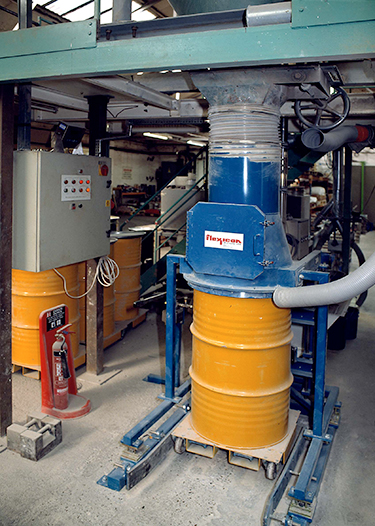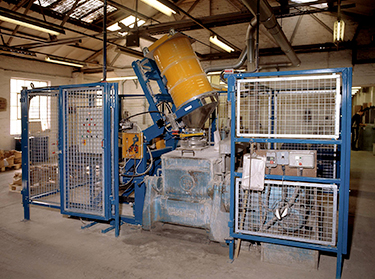 Click to enlarge
Click to enlargeAt the drum filling station, dry powder passes through a gate valve that closes automatically once each drum gains 440 lbs (200 kg) of weight.
 Click to enlarge
Click to enlargeAt the drum discharge station, a cone seats against the drum rim and the receiving hopper inlet, preventing dust as dry material is transferred to the wet blender.


 Click to enlarge
Click to enlarge Click to enlarge
Click to enlarge